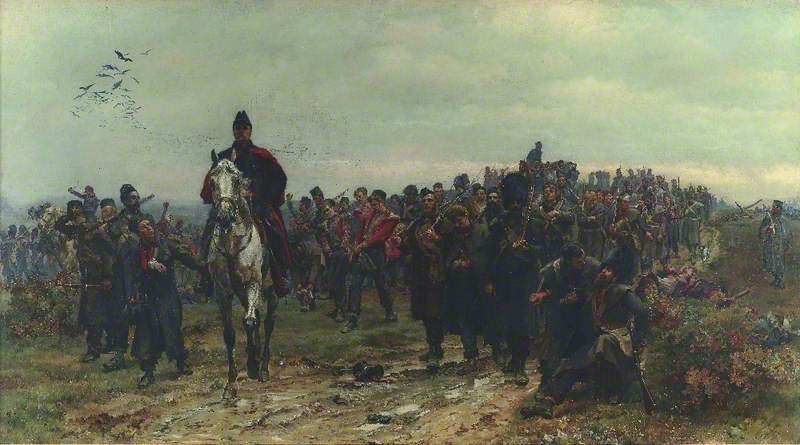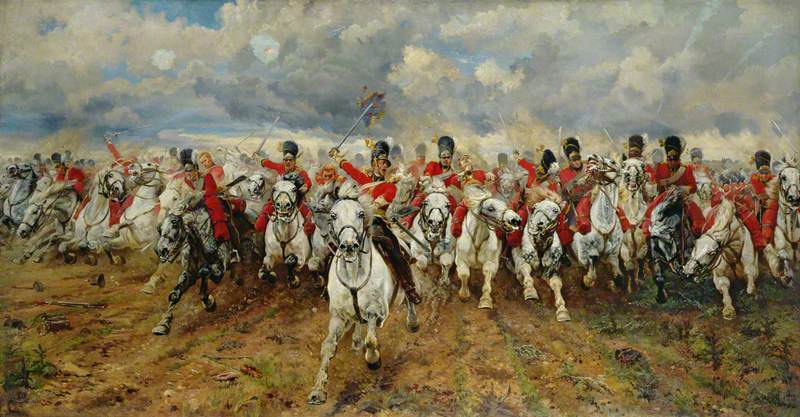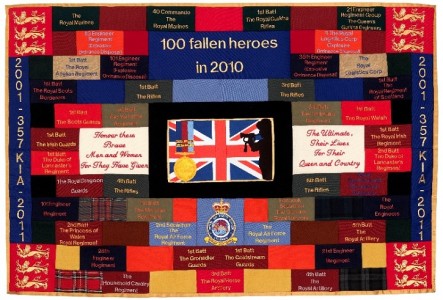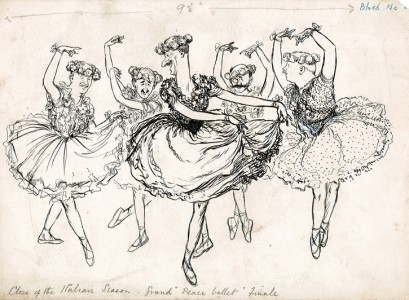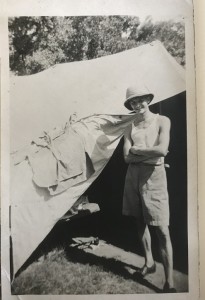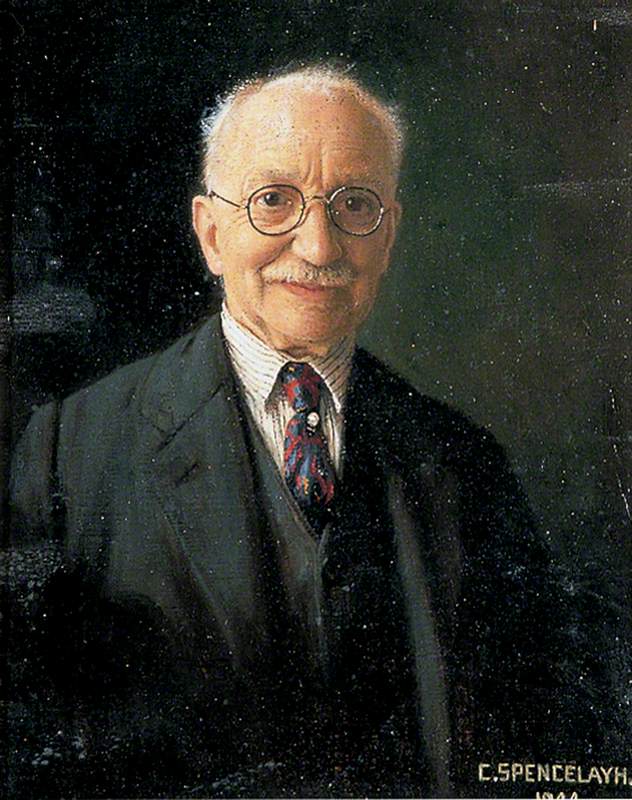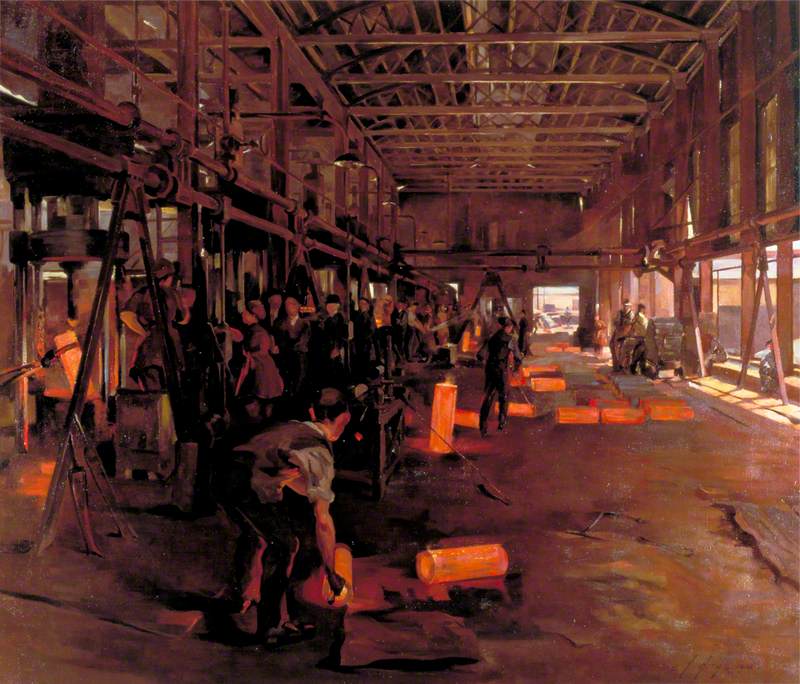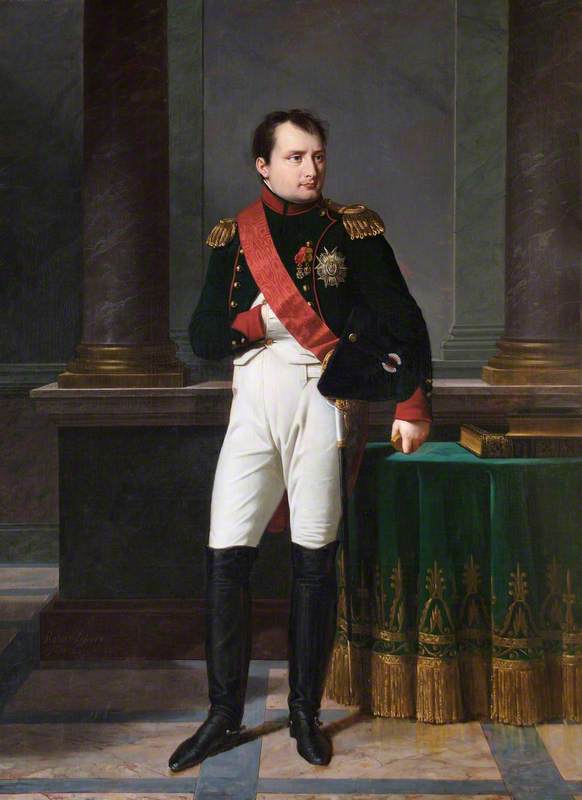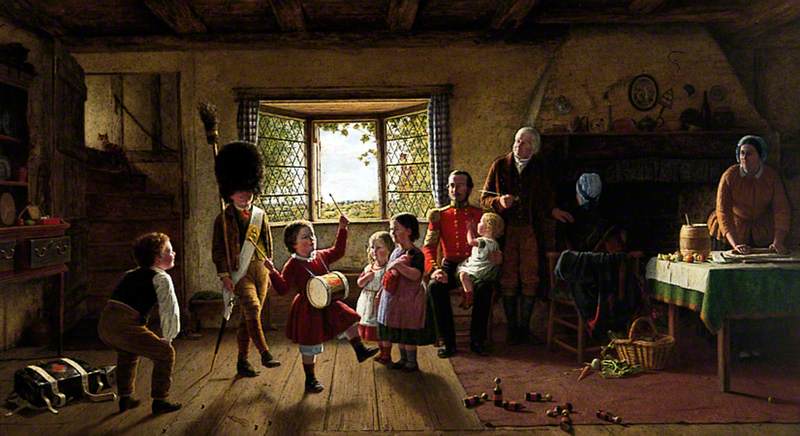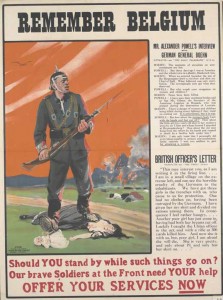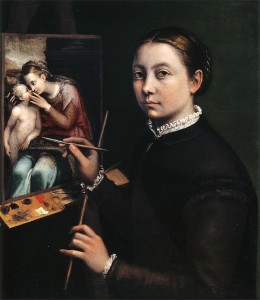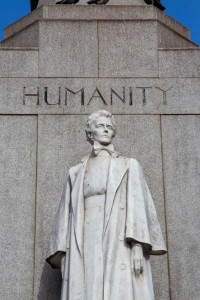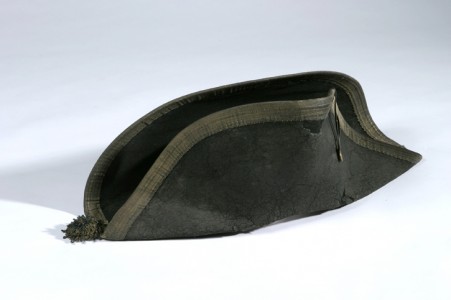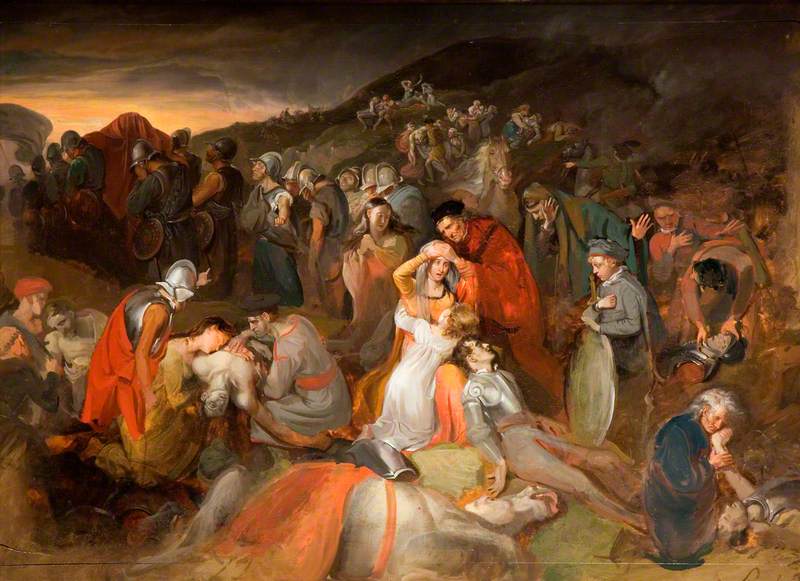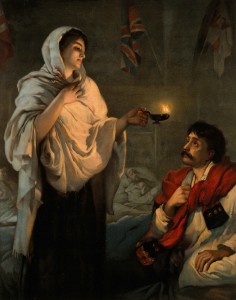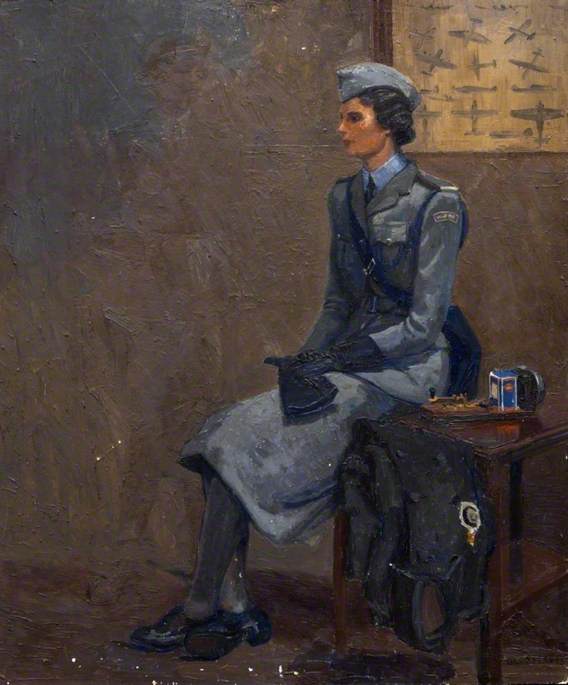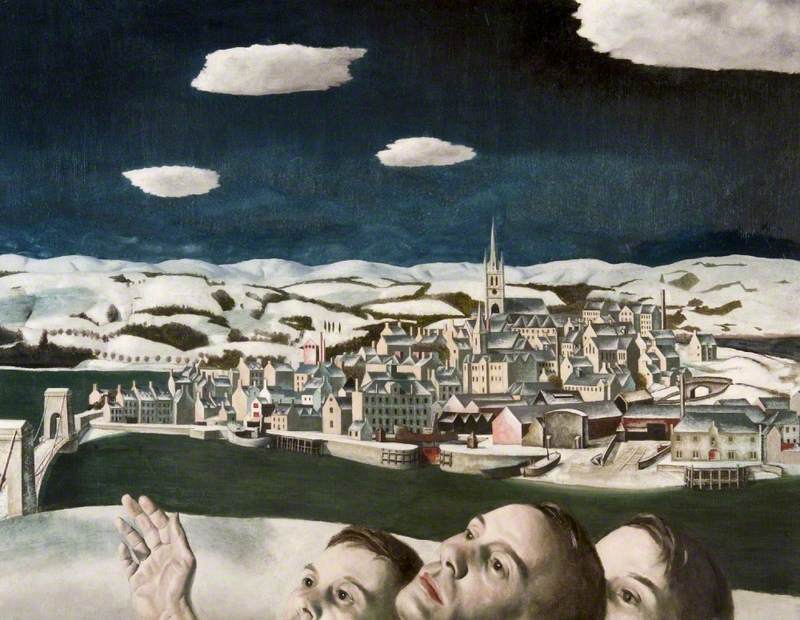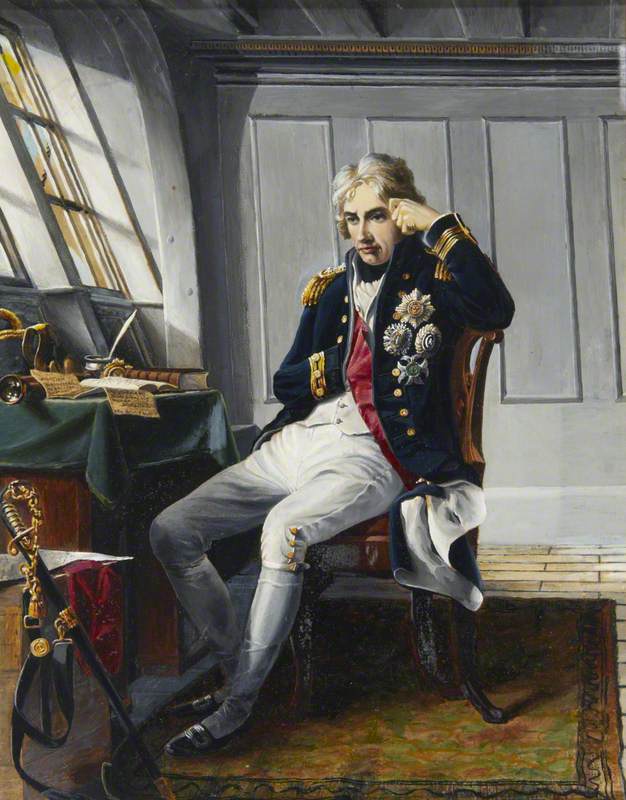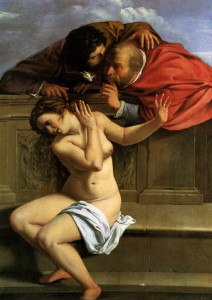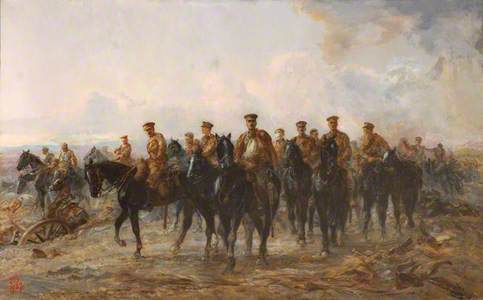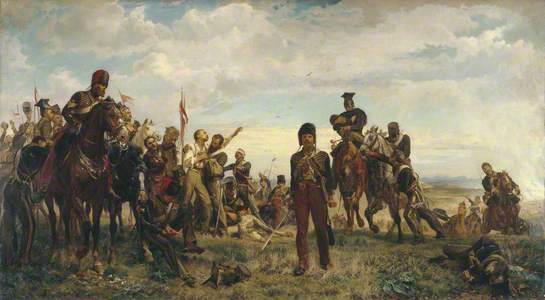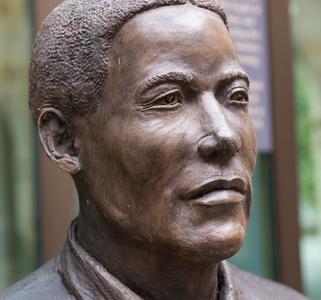Elizabeth Butler does not receive quite as much attention as other First World War artists, and yet she painted pictures of the war in both oil and watercolour. Among them is The Royal Horse Guards Retreat from Mons in the collection of The Royal Hospital Chelsea.
The Royal Horse Guards Retreat from Mons, 1914
1927
Elizabeth Southerden Thompson Butler (1846–1933) 
Elizabeth Thompson was born near Lausanne in 1846. She attended the Female School of Art in South Kensington and in 1869 had further tuition in Florence, from Giuseppe Bellucci. The following year her painting The Magnificat was accepted for the Pope's annual exhibition in Rome.
Feeling confident that the Royal Academy would also accept the painting she submitted it, but it was refused and returned to her with a large hole in it! Undaunted, the following year she submitted another picture, again it was rejected. The following year her painting Missing was accepted by the Royal Academy, but it was 'skied' – that is, hung so high up on the wall that it attracted little attention.
Finally in 1874 her painting of the Crimean War The Roll Call was accepted and hung 'on the line' at eye level. The picture was praised by the Prince of Wales, following which crowds thronged around the painting, so many that a policeman was stationed in front of it to protect it.
One of the finest paintings to come out of the Crimean War - and it is by a woman! Lady Butler’s The Roll Call was bought by Queen Victoria in 1874 pic.twitter.com/pf6wu1sWpf
— Helen Rappaport (@HelenRappaport) November 8, 2018
The picture shows a muster of Grenadier guardsmen standing in the snow as the roll-call is read by a sergeant. Many of the guardsmen have been injured, including the sergeant. The picture had been commissioned by Charles Galloway, a Manchester businessman, but when it was taken to Windsor Castle for Queen Victoria to view she decided that she would like it and it remains in the Royal Collection.
The following year Elizabeth submitted a painting of Waterloo, The 28th Regiment at Quatre Bras in which she showed the 28th Regiment forming a square about to receive the last charge of Marshal Ney's cavalry. The Royal Academy accepted it and again it was a great success. It is now in the National Gallery of Victoria in Australia.
In 1876, twenty years after the Crimean War, Elizabeth produced a picture of Balaclava showing not the charge of the Light Brigade but instead those same soldiers returning from the battle.
She did another painting of the Crimean War, The Return from Inkerman, the following year.
It was in that year, 1877, that she married Major Butler, an Irish career soldier. Elizabeth and William had five children and in her role as an army wife she accompanied her husband on various postings in England and abroad but still found time to paint.
She almost exclusively painted battle pictures, from the Napoleonic Wars, Crimea, Rorke's Drift, the Afghan War, the Battle of Tel el Kebir, the Boer War and the First World War – such unusual subjects for a woman. Her most famous picture, Scotland for Ever!, is at Leeds Art Gallery and shows a charge of the Scots Greys at Waterloo.
Her husband was knighted in 1887, he retired in the rank of Lieutenant General in 1905 and they went to live in Tipperary. William died in 1910 but Elizabeth still continued to paint.
Lady Butler had two 'one man' exhibitions of First World War works at the Leicester Gallery in London – the first in 1917, 'Glimpses of the Great War', and the second in 1919, 'Some Records of the World War'. At the second she showed a watercolour, In the Retreat of 1914: the Royal Horse Guards from which her oil at The Royal Hospital Chelsea was produced. She died in 1933.
Felicity Herring, NADFAS Lecturer

